Website Security for Freelancers: Protecting Your Portfolio

As a freelance graphic designer, your online portfolio is your digital storefront. It’s the first impression potential clients have of your professionalism, creativity, and reliability. However, nothing undermines credibility faster than visitors receiving warnings about malware or suspicious content when they land on your website.
If your clients or prospects are reporting security alerts, immediate action is crucial. Not only do security breaches harm your professional image, but they can also negatively impact your business opportunities. In this article, you’ll learn practical, straightforward steps to identify, remove, and prevent malware or other security threats on your portfolio site—helping you maintain credibility, build client trust, and attract new business securely.

Why Freelancers Should Prioritize Website Security
Freelancers often underestimate their vulnerability to cyber threats. Many assume that hackers only target large businesses or e-commerce stores. In reality, attackers frequently target smaller websites precisely because they often have weaker security measures in place.
For freelance graphic designers, a compromised portfolio website poses serious risks:
-
Damaged Reputation: Visitors encountering malware warnings immediately doubt your professionalism.
-
Lost Opportunities: Prospective clients quickly leave insecure sites, resulting in lost project opportunities.
-
Potential Blacklisting: Search engines can blacklist infected websites, dramatically reducing your visibility and damaging your SEO efforts.
-
Legal Risks: If your site inadvertently spreads malware, it could expose you to liability or regulatory issues.
Protecting your website isn’t just a technical detail—it’s essential for your business success.
How to Quickly Check if Your Portfolio Website Has Been Compromised
Before reinforcing security, confirm if your website currently has malware or vulnerabilities:
1. Use Malware Scanning Tools
Run your portfolio URL through reputable online scanners like Sucuri SiteCheck or VirusTotal. These free tools quickly detect malware, suspicious scripts, and security vulnerabilities, providing detailed reports to guide your cleanup process.
2. Check Google Search Console
Log into Google Search Console. Google alerts website owners about security issues like malware or hacked content directly. If Google identifies malware, they typically provide actionable recommendations to resolve the problem.
3. Inspect Your Website Files
Access your hosting control panel and carefully examine your site’s files. Look for unfamiliar or recently modified files, strange code, or unusual patterns in scripts. Any unknown files or changes could indicate malware or unauthorized access.
Practical Steps to Remove Malware and Secure Your Portfolio Website
Once you’ve identified malware or suspicious activity, take these steps immediately:
Step 1: Backup Your Website Immediately
Even if infected, back up your website. Backups can help you restore lost content after cleanup. Store backups separately (like on cloud storage or your local device), so infected backups don’t overwrite clean versions.
Step 2: Remove Malware Using Security Plugins or Professional Help
Install a reliable security plugin (e.g., Wordfence, Sucuri, or iThemes Security if using WordPress) to detect and remove malware quickly. Follow plugin guidance carefully to ensure thorough removal.
If malware is severe or persistent, consider hiring professional website security experts who specialize in malware removal and recovery.
Step 3: Change All Passwords
After malware removal, immediately change all passwords associated with your website:
-
Hosting provider login
-
FTP access
-
Website admin account
-
Email accounts linked to your hosting or domain
Use strong, unique passwords—consider using a reputable password manager.
Step 4: Update Your Website and Software
Outdated software is a common vulnerability hackers exploit. Update your website software, including:
-
CMS (e.g., WordPress)
-
Themes
-
Plugins and extensions
Regular updates ensure your portfolio remains protected against known vulnerabilities.
Step 5: Check and Correct File Permissions
Incorrect permissions can leave your site vulnerable. Typically, directories should be set to 755, and individual files set to 644. You can verify these settings easily through your hosting control panel or by seeking help from your hosting provider’s support team.
Preventive Measures to Reinforce Your Portfolio’s Security
Once you’ve cleaned and secured your site, follow these practices to prevent future security breaches:
1. Install SSL Certificates
Ensure your portfolio uses HTTPS, secured by SSL. SSL encryption safeguards data exchanged between your website and visitors, boosting visitor confidence and improving search rankings.
2. Enable Web Application Firewall (WAF)
A Web Application Firewall adds an essential protective layer, blocking malicious traffic before it reaches your site. Security plugins like Sucuri and Wordfence provide reliable WAFs.
3. Activate Two-Factor Authentication (2FA)
Two-factor authentication drastically reduces unauthorized access attempts by requiring an additional verification step beyond a username and password.
4. Schedule Regular Security Scans
Configure automated security scans using your chosen security plugin or a third-party scanning service. Regular scans promptly identify and help address potential vulnerabilities before they become serious threats.
5. Regularly Review User Accounts and Access Levels
Frequently verify all user accounts on your website, promptly removing unauthorized or unnecessary accounts. Maintain minimal user privileges to reduce the risk of compromised accounts.
6. Regularly Monitor Your Website for Suspicious Activity
Set up notifications for unusual activities, login attempts, or unexpected changes. Real-time monitoring tools help you quickly respond to emerging threats.
Communicating Security Issues to Your Clients and Visitors
Transparency is crucial. If your visitors previously encountered security warnings, reassure them by clearly communicating the actions you've taken:
-
Publish a brief message on your homepage explaining the situation and the steps you’ve undertaken to resolve it.
-
Notify existing clients or contacts via email or social media, explaining that you’ve resolved the issue and improved security measures.
-
Highlight the additional security steps you’ve implemented, such as SSL encryption or malware protection tools.
Transparent communication helps rebuild trust quickly, demonstrating your commitment to professional excellence.
Final Thoughts: Protecting Your Professional Credibility Through Security
As a freelancer, your portfolio is more than just a showcase—it’s the foundation of your professional reputation. Security issues, especially malware warnings, can undermine the trust you've worked hard to build with clients and prospects.
By following these practical security steps—regular malware checks, security updates, backups, robust passwords, SSL encryption, and transparent communication—you'll proactively safeguard your website and professional credibility.
Investing a small amount of effort today in securing your portfolio website will not only help prevent costly breaches in the future but also enhance your credibility, reassure clients, and create new business opportunities, empowering your freelance graphic design business to grow and thrive safely online.


Subscribe to follow product news, latest in technology, solutions, and updates
บทความอื่นๆ



Let’s build digital products that are simply awesome !
We will get back to you within 24 hours!ติดต่อเรา Please tell us your ideas.
Please tell us your ideas.












